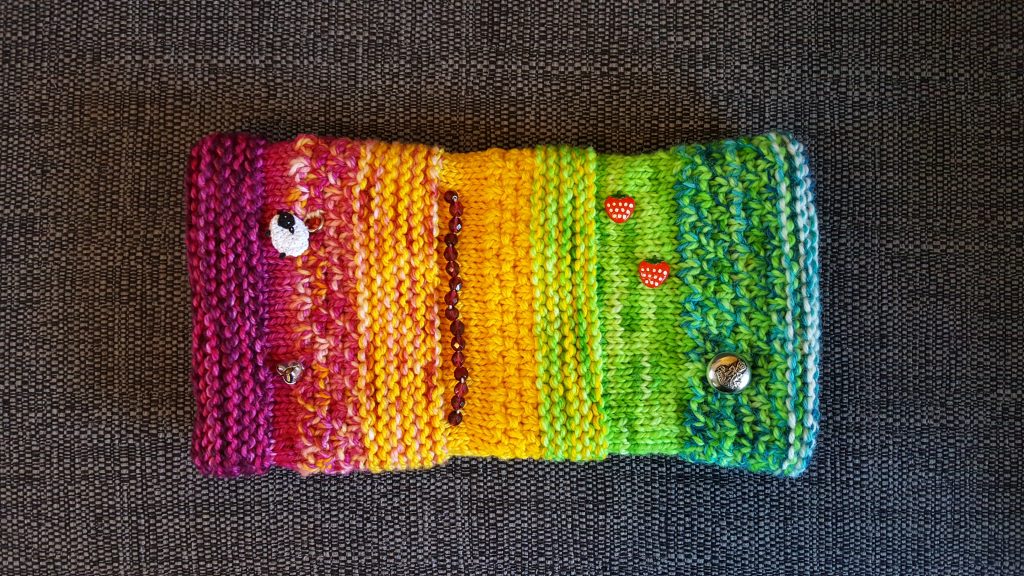
What is a Twiddlemuff?
A twiddlemuff is just like a hand-muff, but it is made with a variety of textures as well as twiddly fiddly bits added to both the inside and outside.
Twiddlemuffs can be used for both sensory activities and anxiety-relieving activities for sufferers of autism and dementia.
Twiddlemuffs are particularly useful for dementia sufferers and their carers. The unfamiliar surroundings of a hospital can cause an unsettled patient to fiddle with medical equipment such as IV lines and dressings. But a twiddlemuff can keep those fingers busy elsewhere.
Twiddlemuffs can also come in the form or a twiddlemat (I’m told men prefer this) or twiddlecuff. Sometimes places use the word fiddle instead of twiddle.
Why make a Twiddlemuff?
Aside from the benefits it can bring to sufferers of autism and dementia, making a twiddlemuff has several benefits for the crafter too.
Firstly, it is a wonderful way to be creative. For those venturing into their first pattern away from a fully written pattern, it is an excellent chance to experiment within some basic guidelines (outlined further below), and create a unique item each and every time. Don’t want to work garter stitch today? No problem!
Twiddlemuffs are meant to use lots of different textures, so it is also a fabulous way to use up leftover yarns from other projects. Or even yarn you no longer want to knit with. Fun fur from a well-intentioned friend anyone? When your yarn runs out, you can just switch in a different yarn. This means you can use up all the leftovers. Just make sure you have enough to sew in the end securely.
Lastly, most hospitals and care homes are crying out for them! Preemie and newborn baby-knit requests usually get filled incredibly quickly. Like lighteningly quick because so many people are making for them! But very few people are making twiddlemuffs that these seem to almost always be needed.
How Do I Get Started?
There is a small catch. Some places are quite specific about their requirements. And any items not meeting those requirements are likely to be rejected.
Some examples…
- Some care homes will not accept twiddlemuffs that have no “anchor button” to correspond with each twiddly bit. An anchor button is a button sewn on the inside of the fabric at the back of a twiddly bit. It helps keep the twiddly bit attached if its owner wants to try and pull it off.
- Some hospitals will only accept synthetic fibers due to the high-temperature that items are washed at, whilst others only accept natural fibers to prevent the build-up of static electricity around oxygen tanks.
- Some places will not accept noisy twiddly items such as bells, or items such as pom poms which can be pulled apart.
- Some places will not accept items with loops as they can catch on medical equipment.
The best place to start is to call or email your local care home or hospital to find out what their needs are.
Many hospitals have a hospital charity associated with them, which is the best place to start. Search your local hospital name and the word “charity” in Google to see if any results come up. Failing that, in the UK, hospitals should display a PALS email address somewhere on their website. They can help get you to the right person to discuss knitted donations.
Once you have any specific requirements, you will also need a postal address or a drop-off location.
Next, you can get started…
Twiddlemuff Pattern Guidelines
This is more of a recipe than a line by line pattern. (For a fully written out pattern check out my Textured Twiddlemuff pattern here). Remember one of the benefits of a twiddlemuff is that you get to be creative, and every twiddlemuff can be unique.
A quick note – stitch patterns you use should be closed stitches please. No lace or openwork designs with holes.
Recommend 5-6mm knitting needle or crochet hook, and Aran weight yarn held single for the lining. (I used 5.5mm knitting needles).
Cast on stitches to make a piece of fabric approx 27-30cm/11-12″ wide. (I cast on 52 stitches).
Work in a plain stitch for 27cm/11″. (I used stocking stitch). This is to create the lining of the twiddlemuff.
Now for some fun making the outside of the twiddlemuff…
Using the same needles and DK yarn held double (one strand can occasionally be fingering weight or aran if you have leftovers to use), switch in and out a variety of different textured and coloured yarns. You can also experiment with different stitch patterns. Work this for a further 30cm/12″.
Your final piece should measure approx 57cm/23″ from the cast on edge. Cast off.
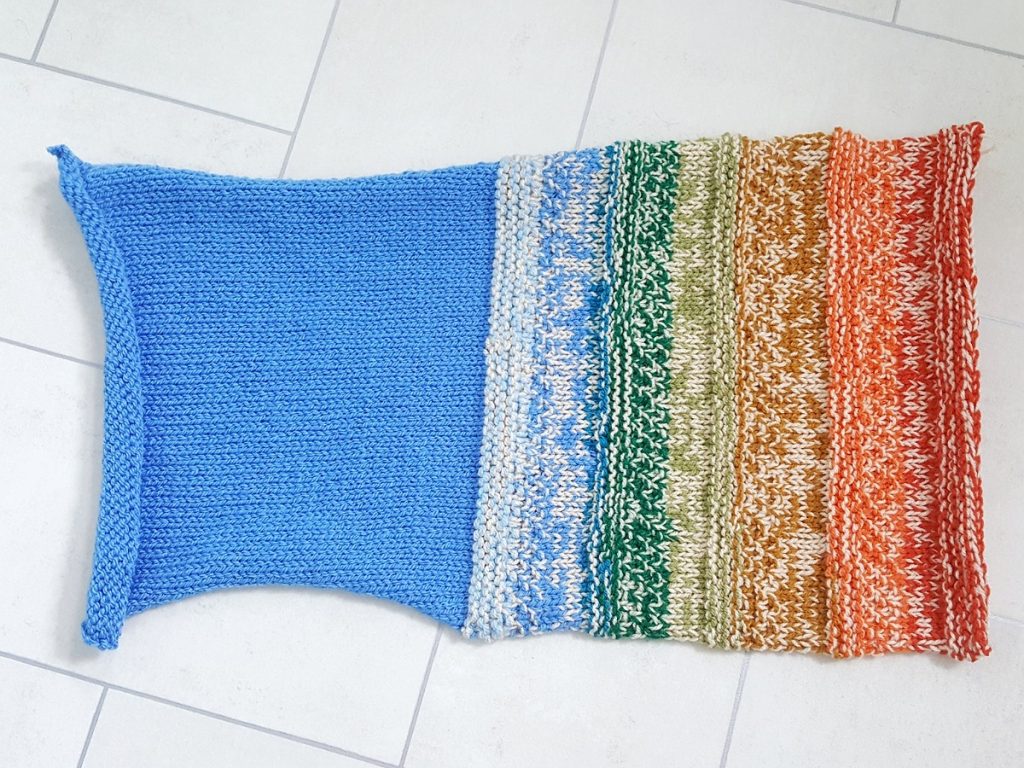
Making Up the Twiddlemuff
1. Next sew in any ends to the back of the work. In the below photo you will see I have left two long tails to sew up the seams.
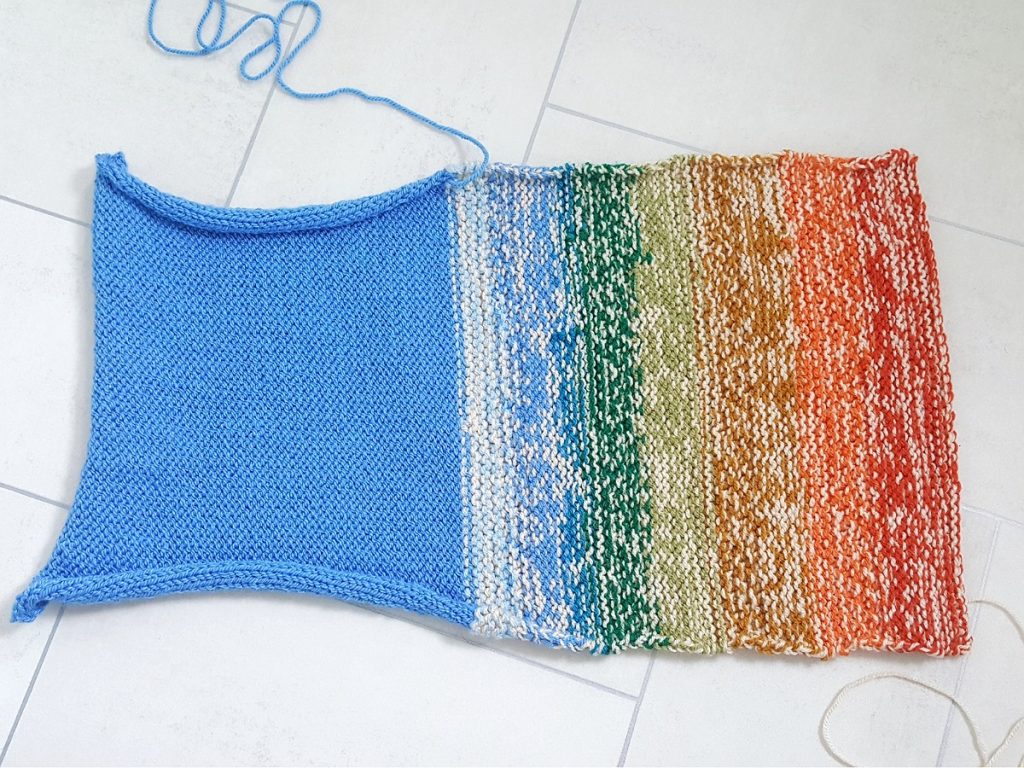
2. Fold the fabric in half lengthways, with the wrong side facing itself.
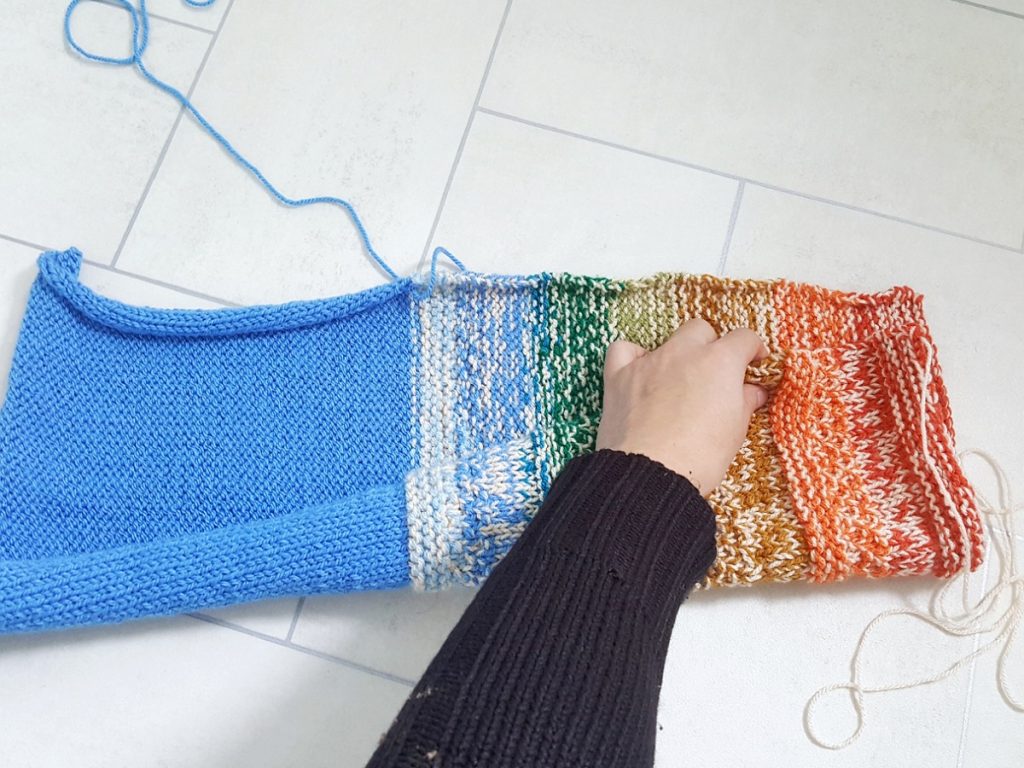
3. Sew the seam up from one end, down the length of the outer to the middle, and down the length of the inner to the other end.
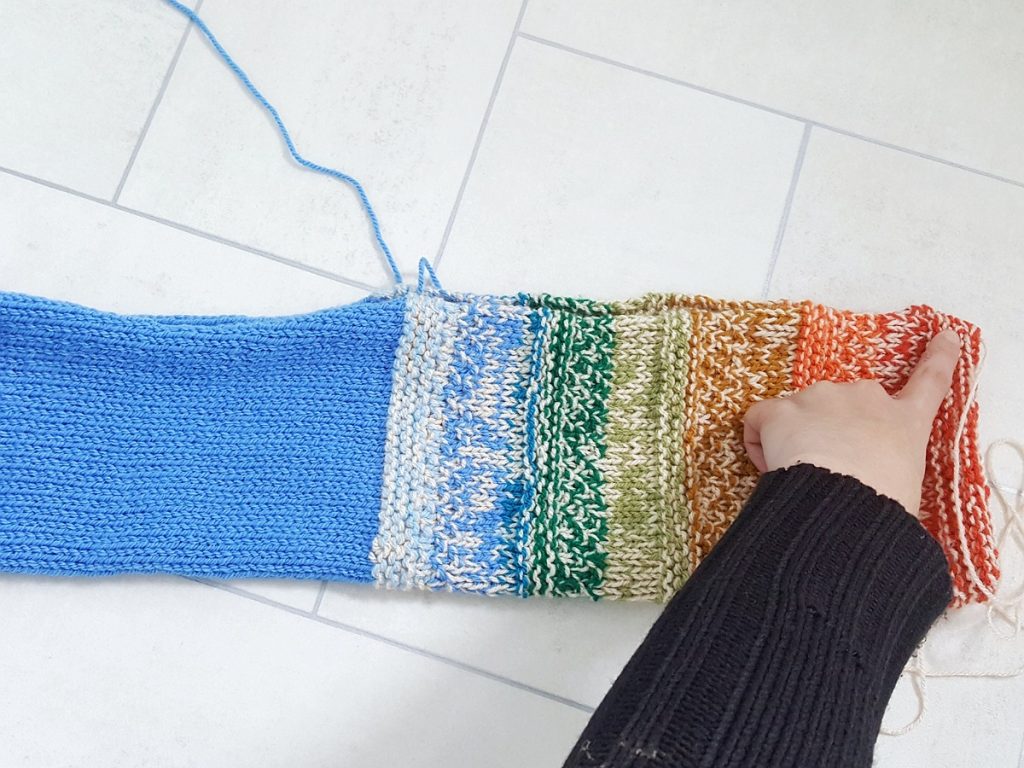
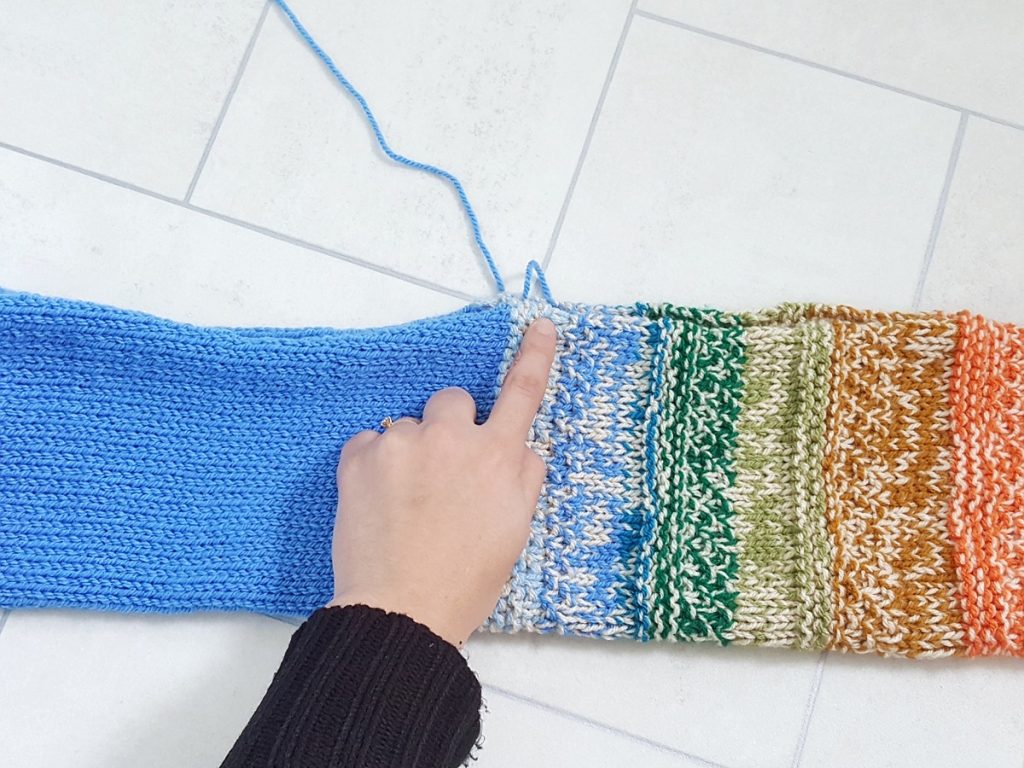
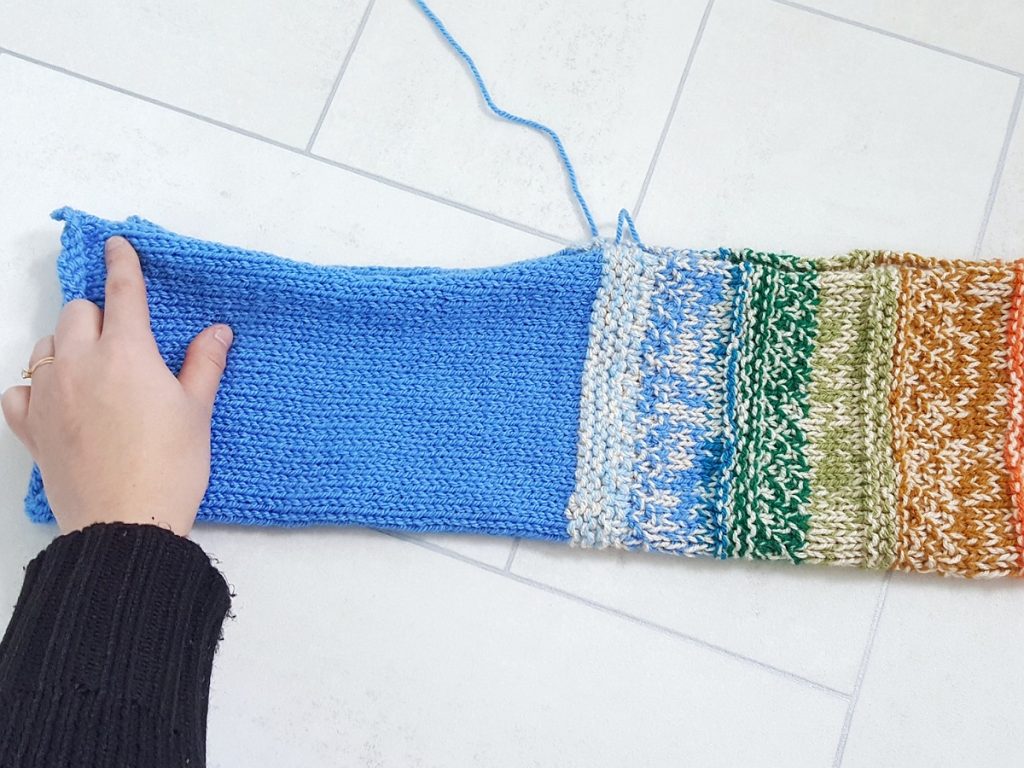
You should have a nice seam the entire length forming a really long tube…
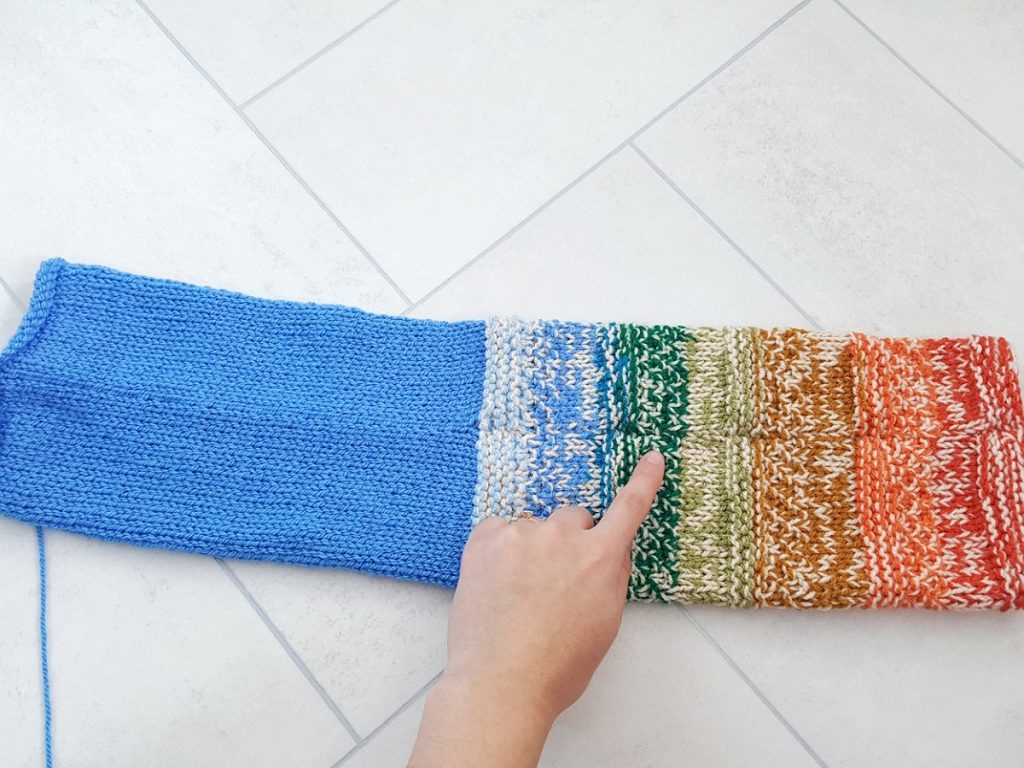
4. Next put your arm in the tube, outer first, and grab the other end.
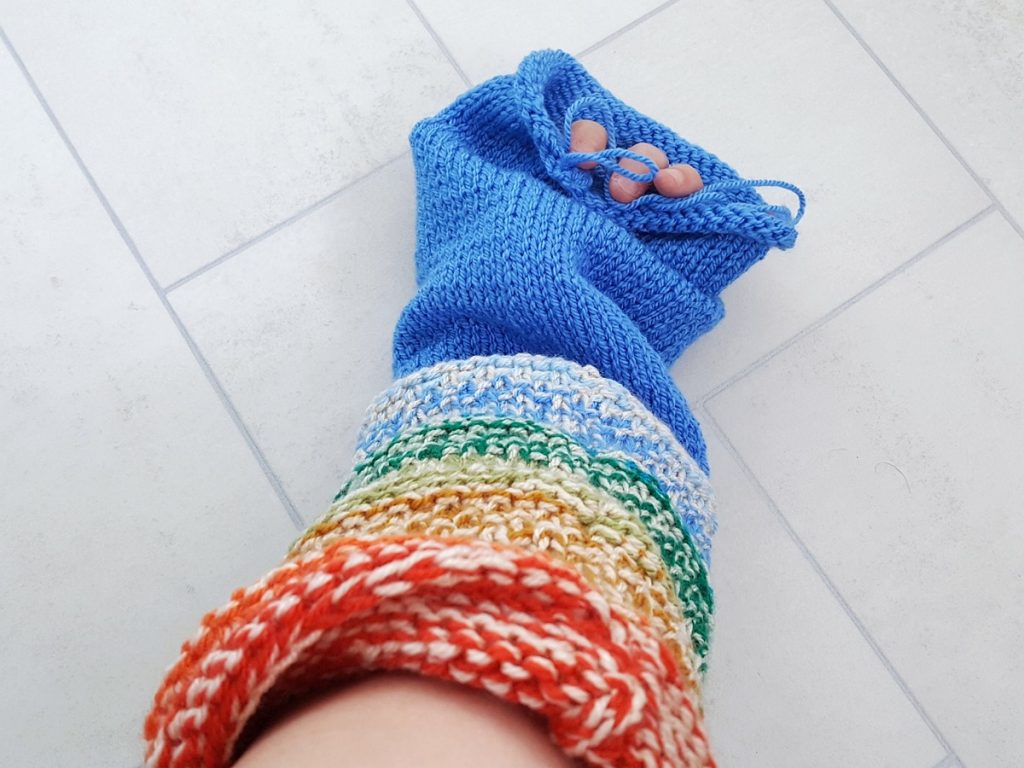
5. Pull the lining into the outer…
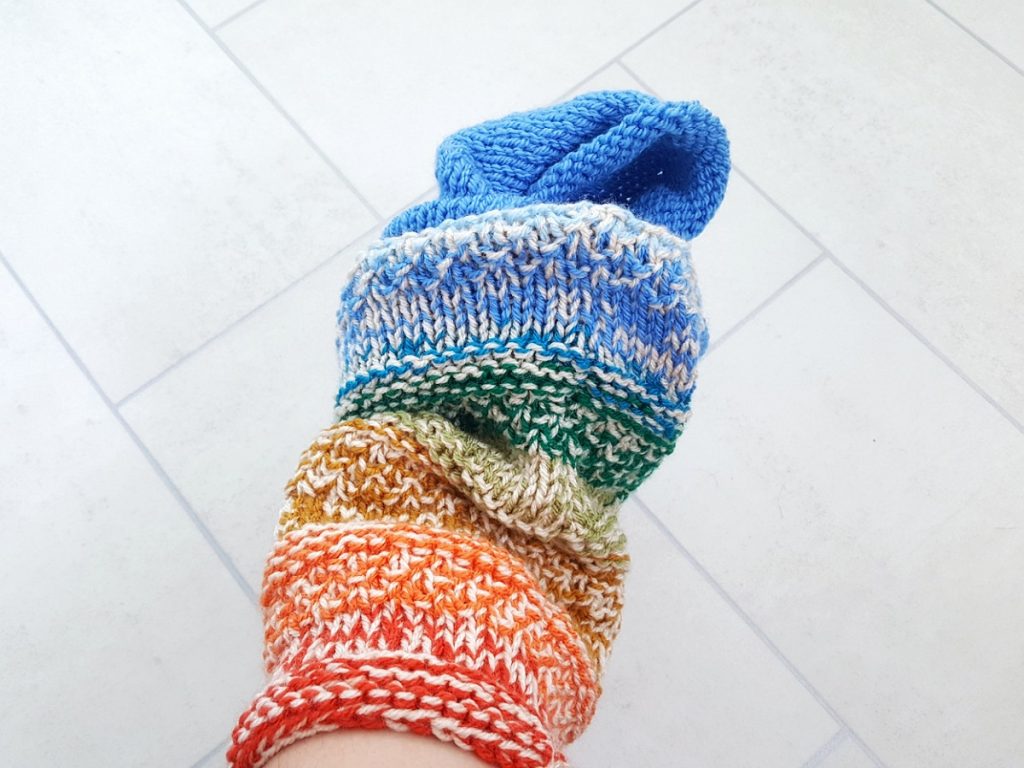
…until it comes all the way through.

6. Line up the seam on both the outer and inner. This is to avoid the lining becoming twisted inside.
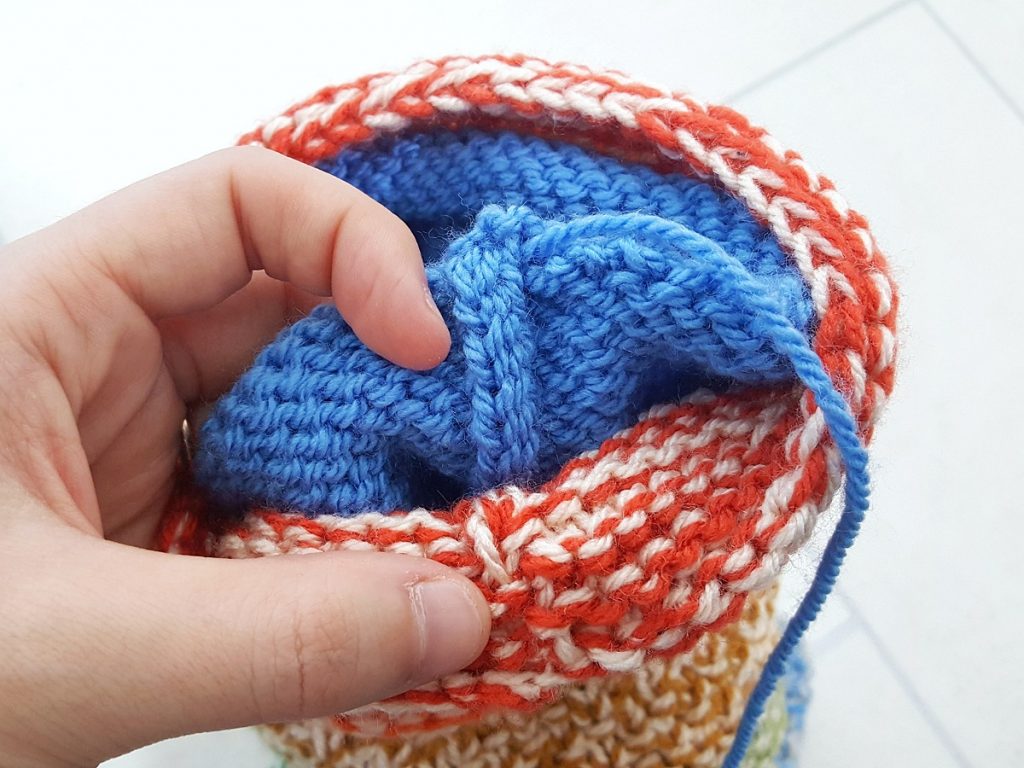
7. Sew the cast on and cast off edges together, all the way around. You should have one cast on stitch to one cast off stitch.
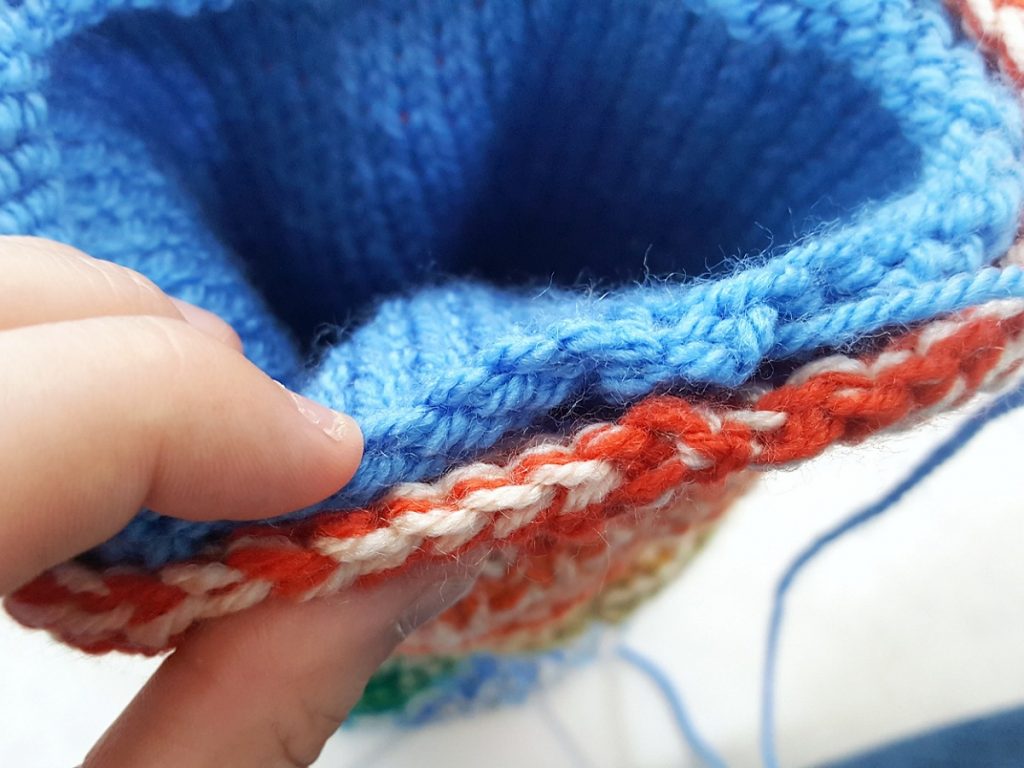
It should look something like this…
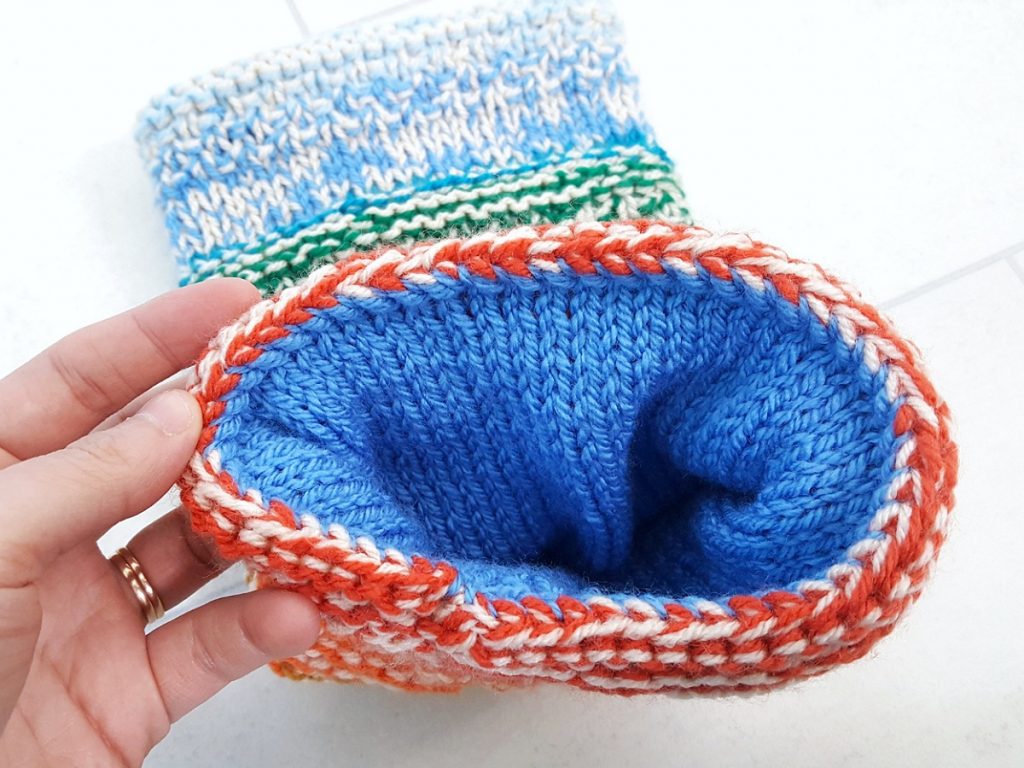
…and you should be able to put your arm all the way through it.
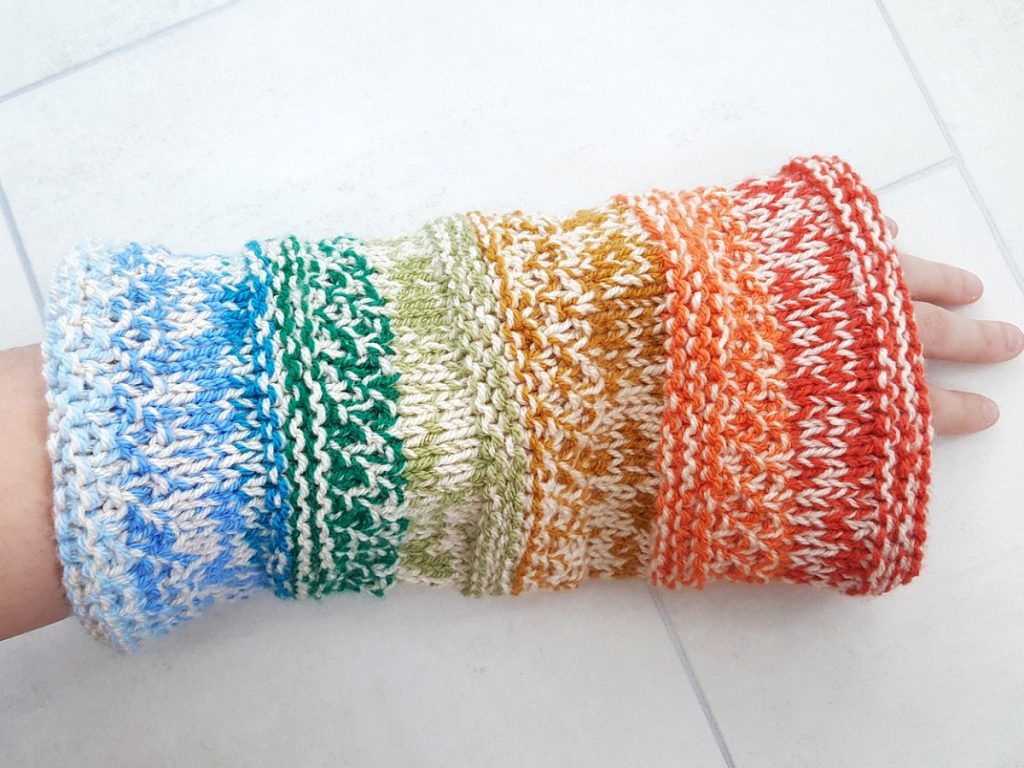
8. Lastly, sew on the twiddly bits. I recommend four smaller items inside, and five items on the outside. These must be sewn on very securely! Give them a jolly good tug to test.
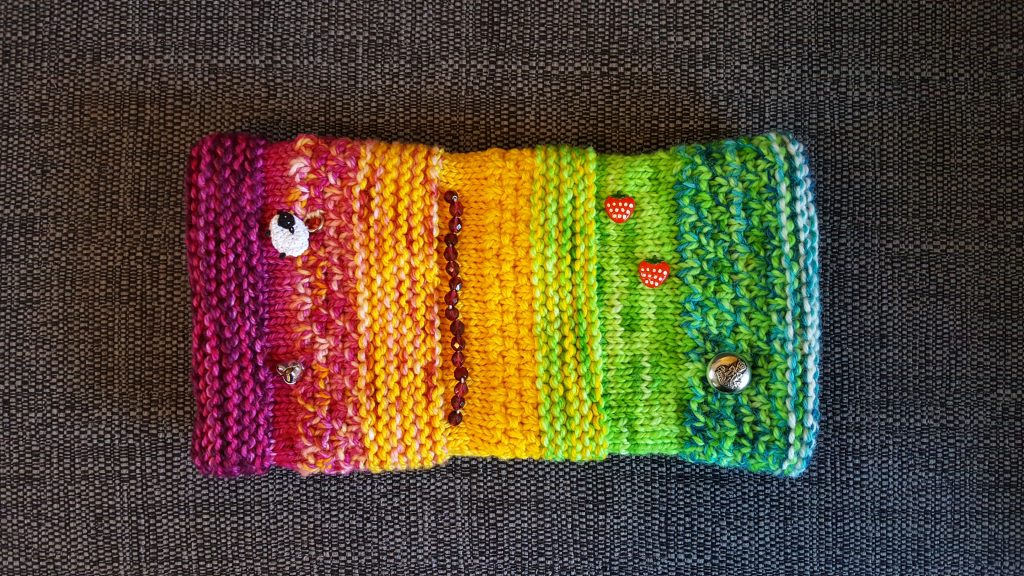
Some places will have restrictions on what can and can’t go on the twiddlemuffs, and it varies from place to place, depending on the experiences and practices of each care home or hospital. Some generally good examples however include…
- Buttons
- Beads
- Strings of beads, secured in many places
- Ribbons
- Pockets
- Zips
- Small jingle bells
- Knitted or crocheted flowers
- Shirt fronts (button and button band)
- Machine lace
- Small teddies/soft toys
- Curtain rings (without the metal hook)
- Small keys
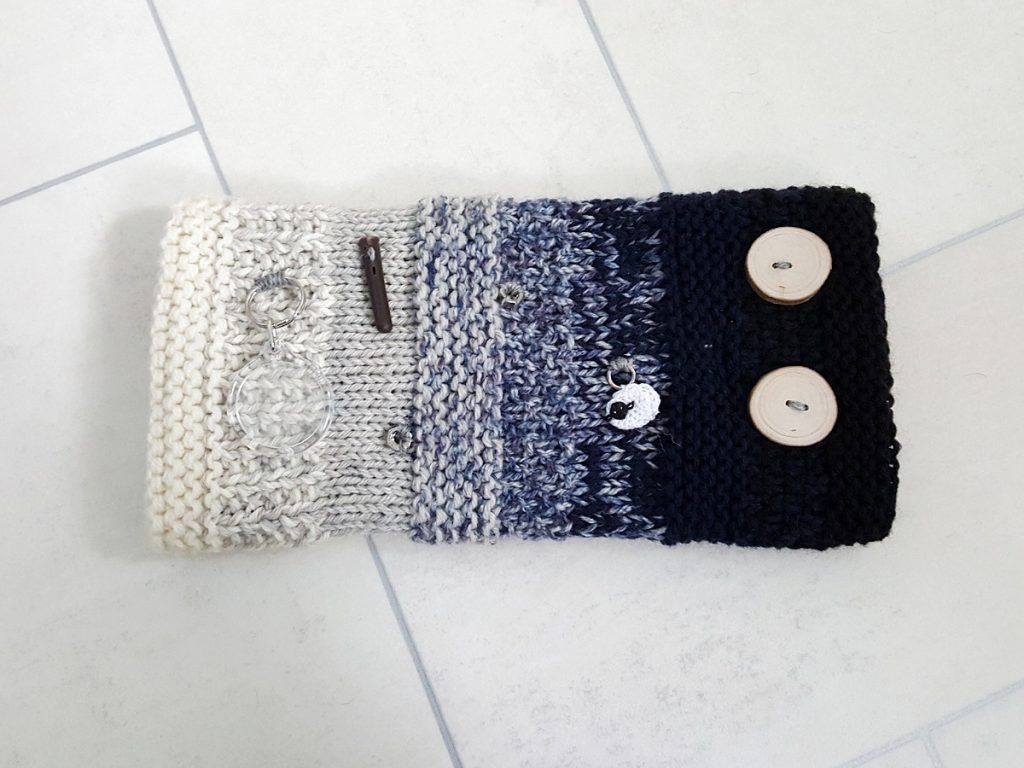
Once your twiddlemuff is complete, simply send it to where it is needed.
Please share this with anyone you know who would like to make one too.
Best wishes, Sam xox
If you want to receive new articles and patterns from us directly into your inbox, then please sign up below.
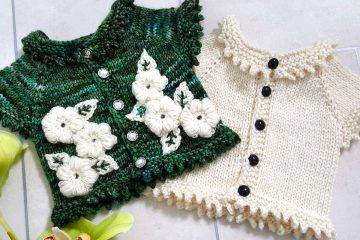

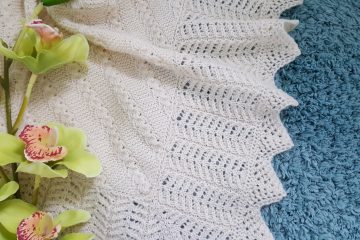
5 Comments
Estelle · 29th March 2020 at 1:14 pm
My friend, your dedication to charity knitting is admirable. I aspire to be like you when I grow up. 💜
fatedsam · 29th March 2020 at 2:05 pm
Thank you so much. Please do join in with the charity knitting too. It can do amazing things for both the recipient amd knitter.xox
EsteeDarla · 21st November 2022 at 11:33 pm
amazing, love the tow tone colors of yarn you used so vibrant what kind of yarn is that? Id love to try this with that type of yarn
Samantha Main · 28th November 2022 at 12:21 pm
hi 🙂 thank you. the yarn used is various brands of double knit yarn, but with two strands held together to get the marled two-tone effect.
EsteeDarla · 30th November 2022 at 8:57 am
Thanks you so much this is so beautiful and I wanted to make some dolls with this color work type look